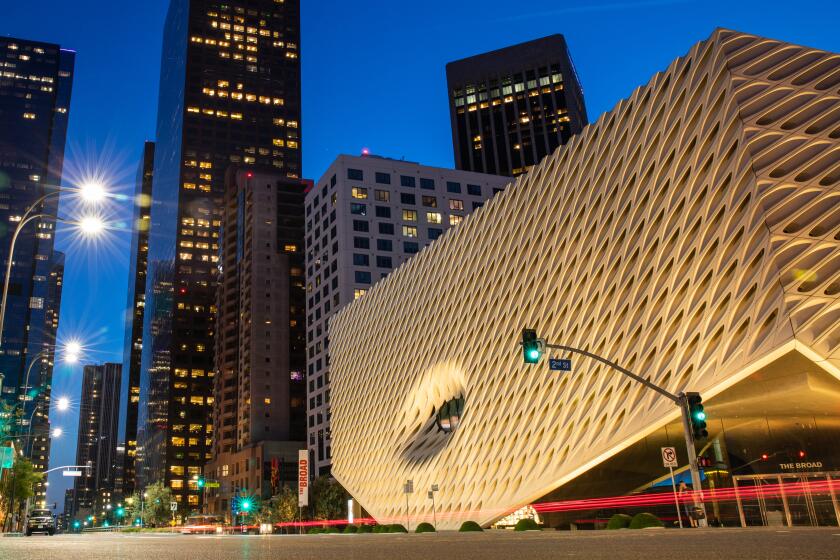MOCA Hits the Pause Button
- Share via
Last month the Museum of Contemporary Art posted 61 billboards throughout Los Angeles. Designed like curators’ notes, with black letters set against a stark white backdrop, the billboards tersely describe features in the landscape around them, encouraging harried commuters to consider urban details they may have dismissed as mundane.
A billboard near the corner of La Brea and Rosewood in Hollywood evokes a section of town where upscale furniture stores and Orthodox synagogues coexist, with strollers in long dresses and wifely wigs passing others in miniskirts and tank tops as if they were in parallel universes:
Untitled (People Praying and Buying Sofas). Churches, temples, mosques, furniture stores of various sizes.
Showing that the city is itself art has become the standard, boilerplate aspiration of most contemporary art museums, but MOCA’s campaign, created by the advertising agency TBWA/Chiat/Day Los Angeles, is a clever departure from tradition, seducing not through festive celebration but through cheeky irony. The following billboard in West Los Angeles, for instance, suggests that some corners of the city are merely an anonymous mess:
A Study in Telephone Poles and Chaos. Wood pylons, wires, discount stores, car lots, food franchises.
In Los Angeles, architecturally and historically interesting buildings are razed, streets favor impatient commuters over strollers and the freeways, as the French philosopher Jean Baudrillard has made a career of observing, encourage people to “escape physicality.” Sometimes, however, as one MOCA billboard puts it, “green lights fall out of synchronization” and people are forced to pause long enough to take in the surroundings.
Ideally, MOCA’s billboards might boost support for urban projects that are in the city’s, as well as the museum’s, self-interest, like the proposed “cultural corridor” that would form a leafy walkway linking MOCA, the Music Center and the Walt Disney Concert Hall, now under construction. More modestly, the billboards are a welcome red light, an artistic provocation asking L.A. motorists to do something unusual: take note of their urban landscape.
More to Read
The biggest entertainment stories
Get our big stories about Hollywood, film, television, music, arts, culture and more right in your inbox as soon as they publish.
You may occasionally receive promotional content from the Los Angeles Times.










